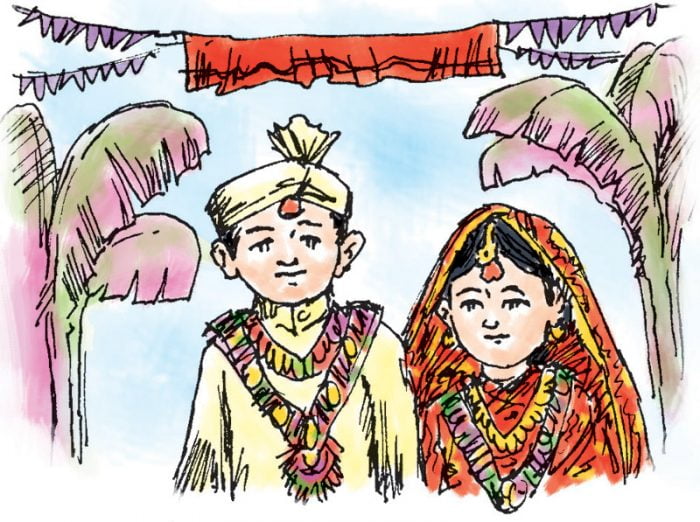Odisha Prevented More Than 700 Child Marriages In Five Months; Here’s How

Bhubaneswar: Odisha’s concerted efforts at preventing child marriages have borne fruit. Increased awareness and better coordination among field-level staff have resulted in a sharp increase in the number of child marriages prevented over the past four years.
A total of 114 villages in Odisha have been declared child-marriage-free as of January 7 this year. Attempts to solemnise 726 such marriages were foiled in the first five months of this year. As against 657 child marriages stopped in 2019, 1,108 were stopped in 2020.
The state was extra vigilant during Akshaya Tritiya when mass marriages take place. Anticipating that the occasion coupled with economic compulsions due to COVID would force people to succumb and organise mass marriages, the state government asked district-level task forces to stay vigilant to protect vulnerable girls from unlawful marriages.
After discussing the matter at the state-level PCMA (Prohibition of Child Marriage Act) Committee meeting chaired by Principal Secretary (Woman & Child Development) Anu Garg, it was decided that religious heads and temple authorities would be requested to put up an information board with the message that “the temple authorities do not support child marriage” to discourage people against this social aberration.
The district administrations of Koraput, Ganjam, Nayagarh and Kandhamal started a post-intervention effort for adolescent girls likely to permanently drop out of school after they remained closed due to COVID. It was decided to give them skill training opportunities to make them economically independent and thereby reduce their vulnerability to child marriage.
The Women & Child Development and Mission Shakti Department launched the State Strategic Action Plan in October 2019 to end child marriage with an objective to make Odisha child-marriage-free by 2030.
ActionAid has also been spearheading a programme to prevent child marriages under its campaign “Say No to Child Marriage -Yes to School.” Apart from Odisha, it has been implemented in Rajasthan, West Bengal, Bihar, and Jharkhand.
“A special effort was made to prevent child marriages two years ago with the Women and Child Development Department, UNICEF and ActionAid, an NGO, joining hands. District coordinators have been placed in 15 vulnerable districts. They worked towards strengthening response mechanism for the prevention of child marriages,” Ghasiram Panda of ActionAid told The Hindu.
“There has been a perceptible improvement in responding to information about child marriages. The district administration in association with the NGOs has been swiftly moving to stop them,” he added.
Some more facts:
- In 2017, 324 child marriages were stopped following the last-minute intervention from the community, NGOs and field-level officials. In 2018, the number grew marginally to 411. However, the last two years saw a massive jump in marriages being stopped.
- This year, Ganjam recorded highest 125 preventions followed by Nabarangpur (111) and Malkangiri (90).
- According to the “Odisha strategic action plan to end child marriage”, the prevalence among girls was reported to be 21.3% against the national average of 26.8% whereas for boys it was only 11% against the national average of 20.3% (NFHS-4, 2015-16).
- Fifteen districts including many southern districts have higher percentages than the state average. There are eight districts where the practice is higher than the national average.
- Odisha witnessed a decline of nearly 16 and 11 percentage points (between NFHS 2005-06 and 2015-16), for girls and boys marrying before the legal ages of 18 and 21 years respectively.
- As per the government strategy paper prepared with the help of UNICEF and UNFPA, poverty is one of the main reasons cited in western Odisha districts for families to opt for child marriage.
- Girls from poor households are more likely to marry as children since marriage becomes a ‘solution’ to reduce the size of the family. The cost of marriage, however, slides families further into poverty, it says.

Comments are closed.